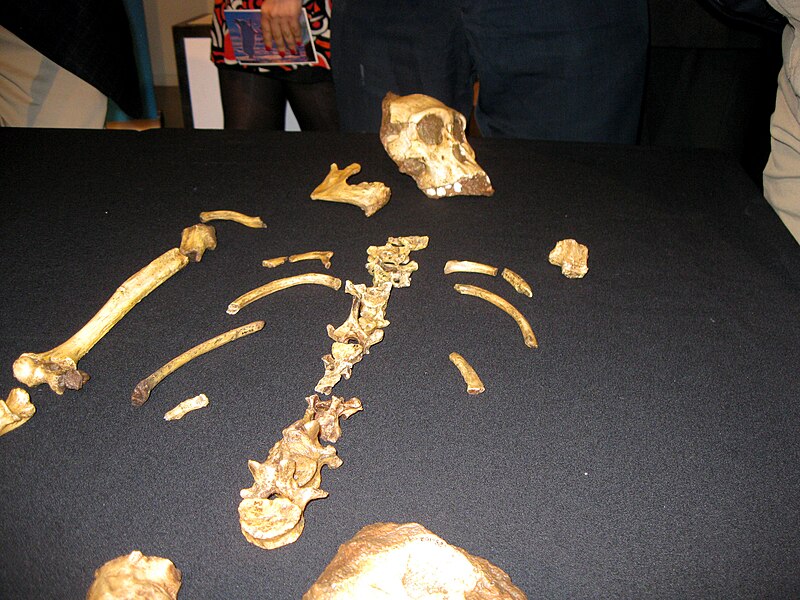1. Hey look! We've had an awesome skeleton here the whole time!
So a while back, they found this partial skeleton of an early hominin, Australopithecus sediba, in South Africa. It's dated to be nearly 2 million years old. It's already considered a great find because of how many associated bones it has, but now they've found even more of it. Or at least, more of some member of Australopithecus sediba, even if it isn't the boy "Karabo", pictured above.
And where have they found these extra remains? In rock. Rock that's just been kickin' around their lab for years. Justin Mukanku, a student technician working in the lab, found a tooth sticking out of one of the chunks of rock that had been brought back from the cave where "Karabo" was discovered. Later scans showed that the chunk of rock was actually filled to the brim with more fossils.
The tooth seems to fit the skull of "Karabo", and the remains inside the rock are tentatively being assigned to him. However, no one will no for sure until they're excavated out. If they do belong to him, this may become the most complete early human ancestor skeleton EVER. Even if they don't, the bones look to be in great shape, and will add tremendously to our knowledge about this species. Like, seriously.
Yes, I'm geeking out just a little bit. I did get my Master's in paleoanthropology, after all.
2. Move over Clovis, Western Stemmed tools may be the earliest tool culture in the United States.
 |
| Clovis point, courtesy Virginia Dept. of Historic Resources. |
Previously, there were suggestions that Western Stemmed was derived from Clovis culture. Now that radio-carbon dating places Western Stemmed at the same age or older than Clovis, it's becoming clear that Western Stemmed was a separate tradition, developed independently of Clovis. As Clovis moved west across what is now the U.S., and Western Stemmed moved east, they eventually merged somewhat and spawned new tool concepts.
Of course, all of this still doesn't explain the much, much earlier (60 thousand year-old) evidence of human culture in the Americas in Brazil. But that's been a mystery for years, and as far as I understand it, isn't anywhere close to being solved yet. When it is, you'll definitely see a post about it here.
3. Pluto has a fifth
 | ||
| Pluto and three of its five satellites. |
In 2005, Hubble discovered two new "moons" around Pluto. In 2011 it discovered a fourth. And now, it's discovered a fifth satellite. (Since Pluto isn't a planet, the things that orbit it technically are not called moons.)
And this new one is tiny. I mean, nothing about Pluto or its satellites is very big, but really...this is almost absurdly small. The satellite isn't even big enough to be round, and varies in width from 6 miles to 15 miles across. That'd make it about the size, if not smaller than, the asteroid that hit Earth 65 million years ago. This "moon" is the size of a smallish asteroid.
What this tells us, is that out with Pluto and the other Kuiper Belt Objects, there's likely a whole field of asteroid-sized objects that we have yet to detect. We've found over 200 things out there past Neptune so far, but obviously there's way more to find. And this fifth satellite is our first real clue at what size we need to be looking for.

No comments:
Post a Comment